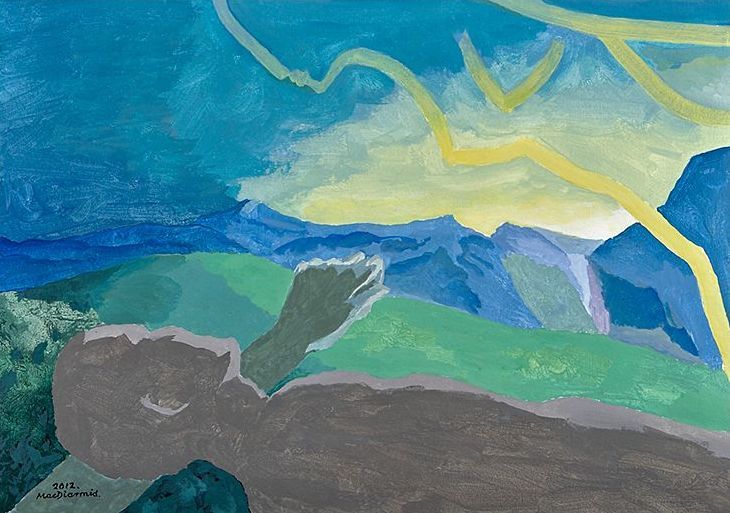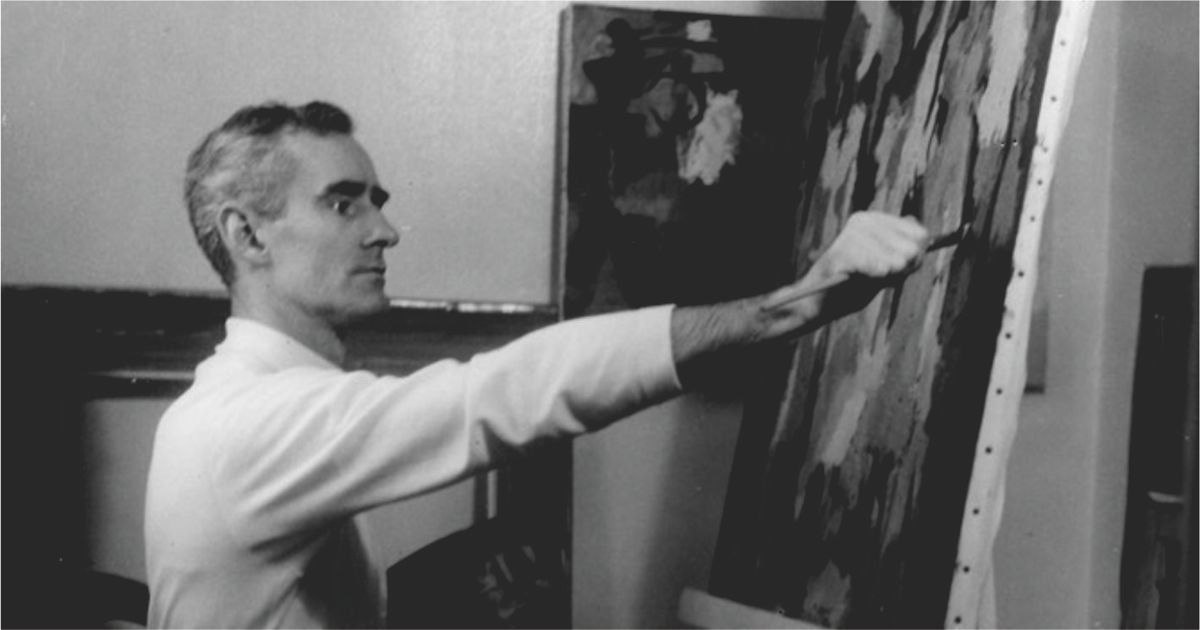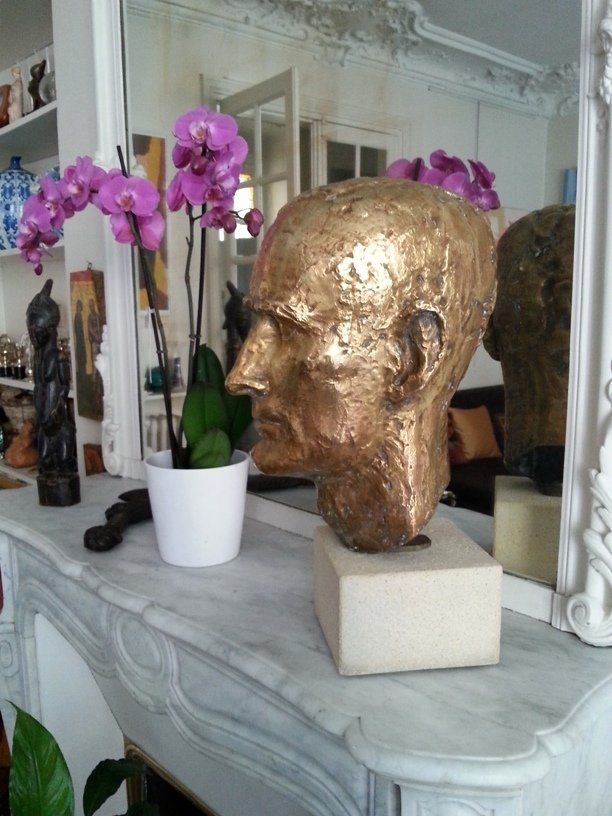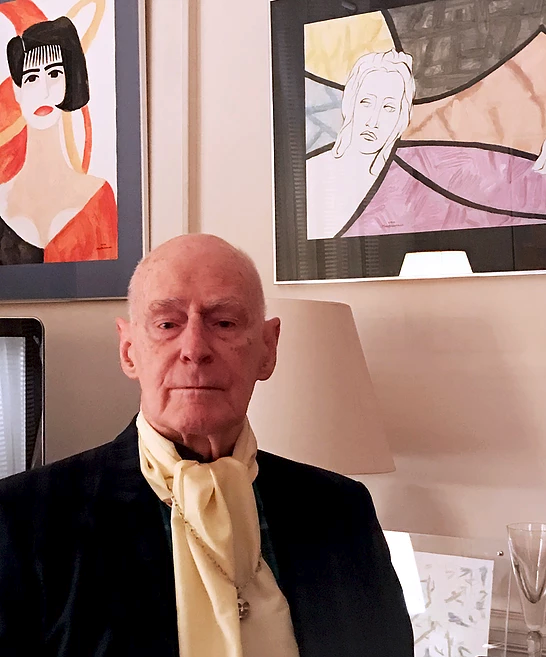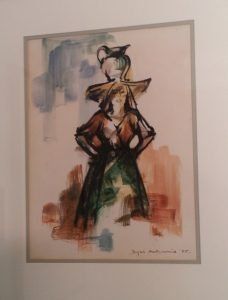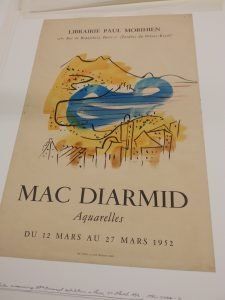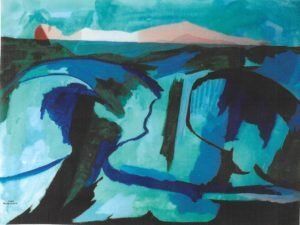Artletty 2012
ARLETTY 2012 – a painter’s dream
In Douglas MacDiarmid’s world, there is often a fascinating backstory to a painting. In this case, not only the subject but a glimpse into his creative practice.
Arletty is a screen legend in France. A beautiful, tall, statuesque actress and singer she was celebrated as much for her performances as her gouaille, (which loosely translates as lippy attitude or back-chatting) from the 1930s to the late 1960s in the golden age of French cinema.
Arletty 2012, Acrylic on paper 64 x 45 cm. Private collection, New Zealand. Painting image kindly supplied by Jonathan Grant Gallery, Auckland.
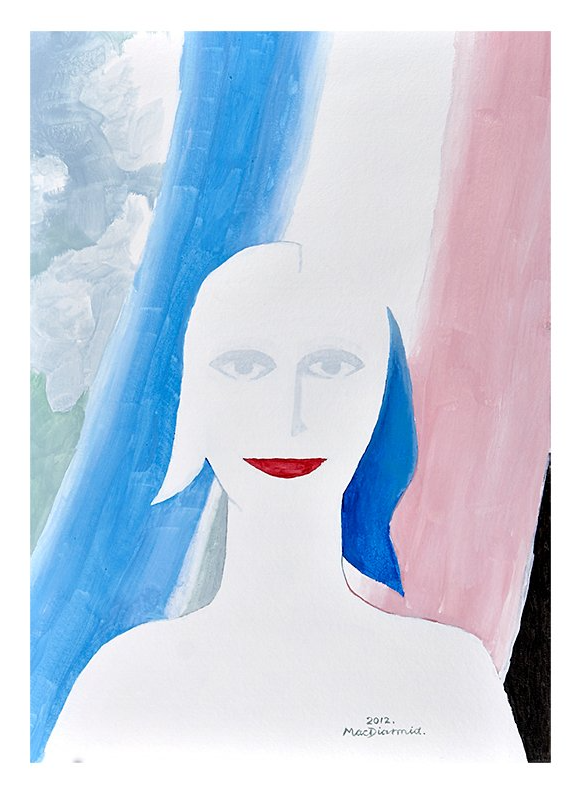
Born in 1898, Léonie Marie Julie Bathiat took the stage name ‘Arlette’ based on the heroine of a Guy de Maupassant story – and updated it with a ‘y’. She was a music hall and cabaret performer, fashion and artists’ model for Braque and Matisse before becoming a movie star. It was her distinctive voice – once described by a film reviewer as somewhere between “a mountain stream and a gin-soaked parrot” – that first attracted film producers as silent movies gave way to the ‘talkies’. Audiences adored her – the quintessential French screen goddess of numerous movies, including cult classics such as ‘Hôtel du Nord’ (1938), ‘Les Enfants du Paradis’ (The Children of Paradise) 1945, and ‘United States blockbuster ‘The Longest Day’ (1962).
A pacifist and self-declared anarchist, Arletty was made a public example of in 1945 when she was found guilty of treason, after a wartime liaison with a German Luftwaffe officer during the occupation of France. She was too famous to have her skull shaved and tarred with a swastika, and paraded through hostile street mobs, like other French woman who fell in love with German soldiers. After a few weeks in prison, she served the rest of her sentence in detention at a private chateau.
Always her own woman, she later said of the experience: “Si mon cœur est français, mon cul, lui, est international” (My heart is French, but my ass/sex is international.)
Douglas loved watching Arletty in her screen heyday, he admired her feisty nature. She died in 1992 at the age of 94 and is still revered by classic movie buffs today. In 1995, The French Government celebrated the centenary of film with a limited edition set of coins, including a 100 Franc piece bearing her image.
“Ah, she was a marvellous personality and very beautiful. Her films are absolutely superb,” he recalled. “She was at the height of success in the films of Marcel Carne in the forties & fifties.
“She filled my head with lasting dreams and, by one of those curious quirks of chance, at a later date I met her quite often at dinners in the sumptuous house of a friend. Arletty was blinded by a sudden glaucoma; in a flash her world simply blanked out into white. She was refreshingly witty & charming to the end.”
In 2015, Douglas explained that a scrap of red paper in his Montmartre studio was the spark for painting Arletty. “When I’m doing a painting and am uncertain about a colour that I want to add, I tear bits of the approximate colour out of a magazine to give me an idea of whether I’m in the right direction or not, because I don’t use colour in a specially descriptive way, I use it more in an emotional sense. So I cut out a bit of paper and put it on the painting I was working on, and when I had finished with it I thought I might need it again, so I simply stuck it on the edge of my work table, and it’s still there. I had some blue paint on my hand which rubbed off at the same time. One day I looked up and suddenly thought, ‘Good grief, it’s Arletty’s smile...!’ And so I made this painting of Arletty.”
Arletty 2012 was painted in Paris on Bastille Day – the French National Holiday, 14 July 2012. It first appeared in New Zealand for the October 2013 solo exhibition ‘Douglas MacDiarmid: An Artist Abroad’ at Jonathan Grant Gallery. At the time, he wrote: “I neither live nor work to formula, responding mostly to stimuli inner or outer, which have the effect of command. Mood evolves as the painting proceeds & decides the degree of abstraction or figuration, in general a blend of both, given the liberty & elusiveness of vision.”
There is a brief reference to this painting in his biography Colours of a Life: The life and times of Douglas MacDiarmid in Chapter 13 ‘A life well coloured’, on Page 433.
_______________________________________________________________
To read more about Douglas MacDiarmid’s fascinating journey through life buy your copy of Colours of a Life – the life and times of Douglas MacDiarmid by Anna Cahill (2018).
To read more about Douglas MacDiarmid’s fascinating journey through life Buy your copy of Colours of a Life – the life and times of Douglas MacDiarmid by Anna Cahill (2018)

